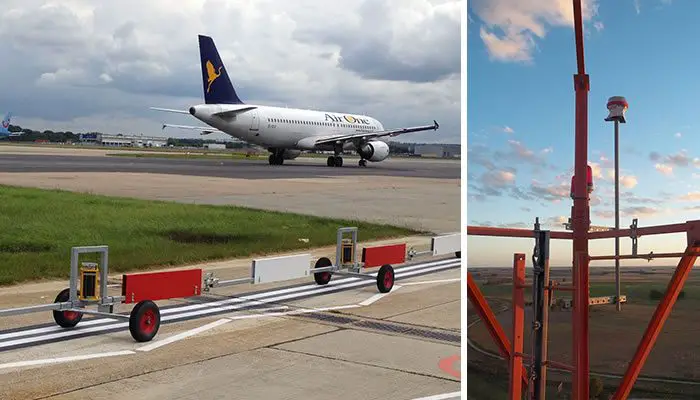Carmanah has been manufacturing and designing solar powered hazard marking and signaling solutions since 1996 and has installations in over 110 countries around the globe. Our line of OL Series lights are used as aviation hazard marking lights on wind towers and other structures where obstruction marking is required.
Our newestOL800 low-intensity solar LED obstruction light comes in a cost effective and scalable design and is photometrically compliant with FAA L-810 obstruction lighting requirements and requirements for ICAO Type A/B Low-Intensity Obstacle Lights. The durable and low maintenance system has fully integrated solar panels with no external wiring or cables. The product has a minimum 5-year life expectancy that can be extended through battery replacement and comes with a three-year warranty. Battery packs come in multiple sizes to ensure purchasers receive the right amount of energy storage required for their installation location at an optimal price.
Like all Carmanah products, the OL800 uses an intelligent energy management system to ensure ongoing and reliable performance. This includes, intelligent microprocessor-based Energy Management System (EMS), Maximum Power Point Tracking (MPPT), Temperature Compensated Maximum Power Point Tracking and our patented Automated Light Control.
Carmanah also supplies a selection of general-purpose hazard markers that can also be used in mining, construction and rail yards zones, both for permanent and temporary installations. All of Carmanah’s OL Series products are designed and tested to perform to the toughest industrial standards, including EN 60945: (EMC, ESD, EMI) and MIL-STD-2020G (for vibration, immersion and humidity); and MIL-STD-810G (salt fog, solar radiation) among others. Carmanah products use the highest power LEDs, high-grade VRLA AGM batteries, premium monocrystalline solar panels and rugged aluminum/polycarbonate enclosures. The products incorporate user-friendly interfaces and green solutions (recyclable batteries, RoHS-compliant design and a natural solar charging system). The company’s stringent standards and passion for their work differentiate us in a market where performance is crucial.
Mimi Drabit, the Division Manager, Signals at Carmanah advises purchasers to look for a supplier that can look at the solar energy availability in their installation location and confirm that the product’s battery size and solar panel ratio is correct and suitable for the environment. In regard to future expectations in the industry, Mimi adds “We expect to only see more adoption of solar, especially in applications like temporary or construction phase lighting.”
The company products are available in USA, UK, Australia, and Africa (e.g. Angola and Nigeria).
Contributor,
Mimi Drabit
Division Manager, Signals
[email protected]
www.carmanah.com

